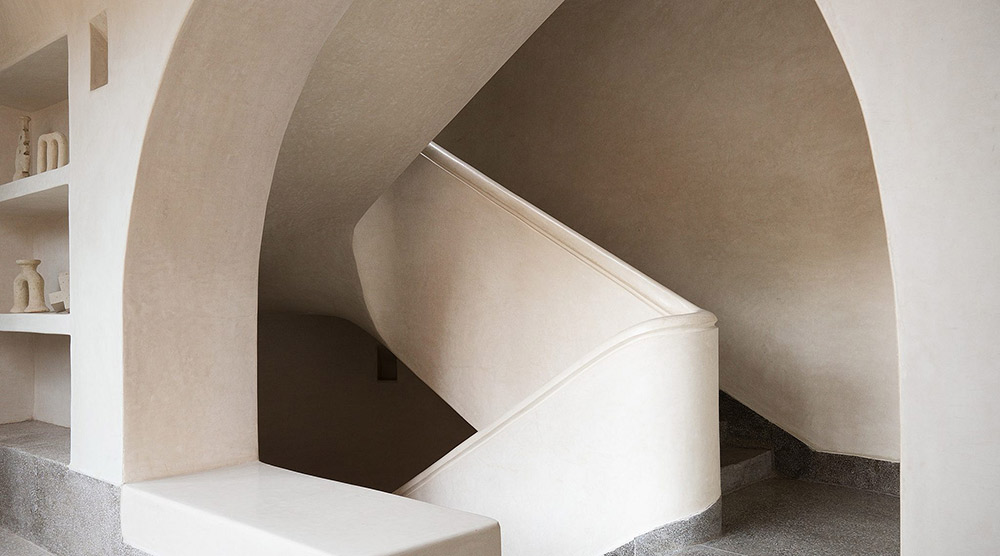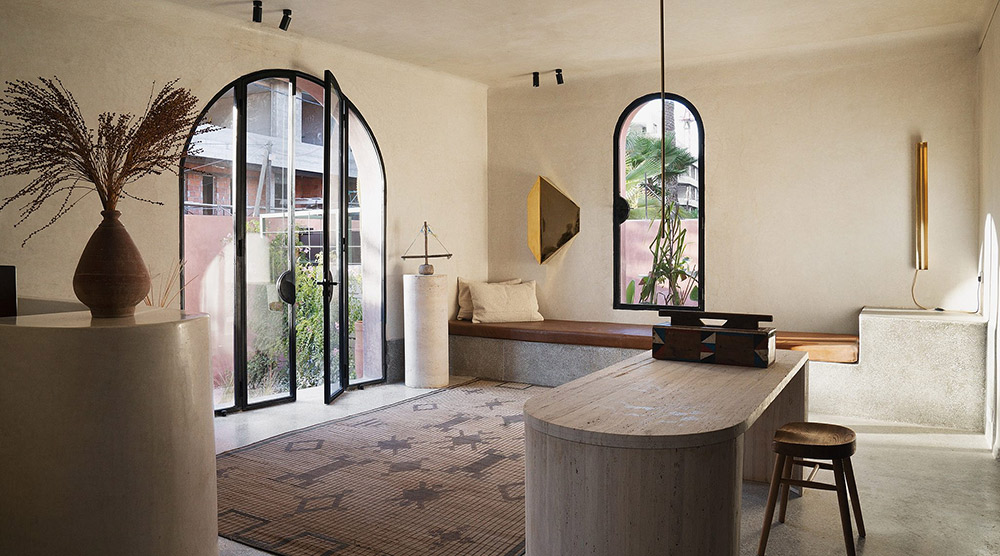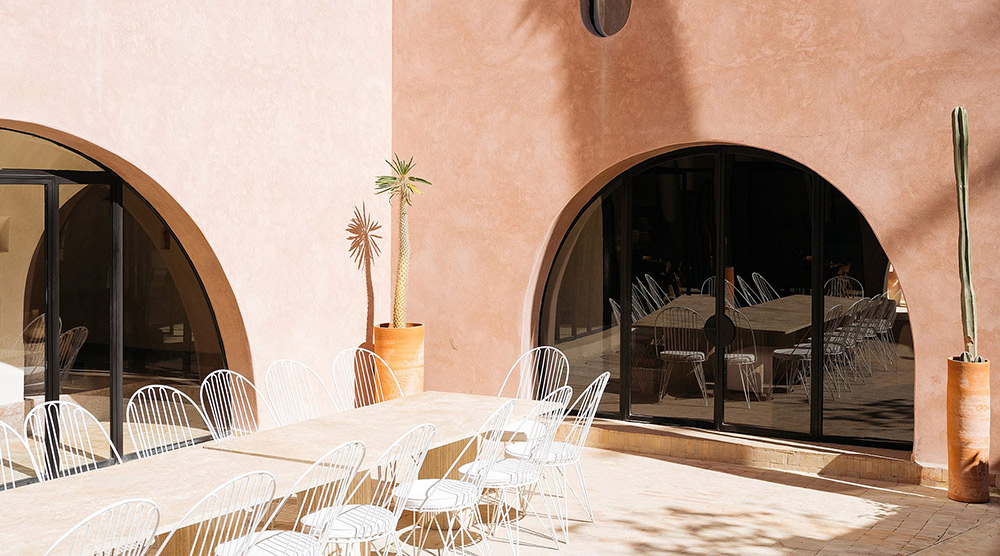In Marrakech, the medina is always bustling. This historical centre is filled with sellers hawking textiles, tiles, and pottery—a thriving economic scene bursting with tradition and culture. The medina is wrapped in ramparts, massive reddish-brown walls made of earth that 84 were built in the 12th century to defend it. When she was tasked with designing a hotel in Marrakech, New Zealand architect Bergendy Cooke was impressed by these walls—their timelessness and simple, elegant construction—as well as by the culture and history of the city around and within them. Over three years, she took these influences and injected them into the design of the Maison Brummell Majorelle, an eight-person boutique hotel that nods at traditional Moroccan architecture while adding its own playful twists.
Built for Austrian hotelier Christian Schallert, Maison Brummell Majorelle mingles easily with the landscape of Marrakech and of the Majorelle neighbourhood where it’s located. It’s clad in a mix of earth and quicklime that gives it an earthy pink tone, and surrounded by an outer wall with contrasting smooth and textured surfaces. Palms loom overhead as it juts out of the environment like a natural rock formation, deceptively simple. But there’s a subtle intricacy in the arches that are carved into the building, that create doorways on the first floor and are flipped upside down on the upper floors to make balconies. Part of the easy naturalness of the hotel’s facade comes from how it was constructed: they began with a solid mass and then carved out incisions in it. “Creating deep openings minimized direct sun contact and created openings for private terraces,” says Cooke.

One of the building’s three floors sits below ground level and replicates a Riad layout: a traditional Moroccan interior courtyard that’s typically lush with plants and water. On that floor are communal spaces for dining and lounging as well as a swimming pool and a hammam, or Moroccan bath, with a massage room and plunge pool. The bedrooms are arranged throughout the other floors. Through the structure, brass highlights in doors and hallways denote transitions between areas, demarcating when you’re moving from public to private spaces, and from outside to inside. The interior is as preoccupied with a sense of serene simplicity as the facade, with curved surfaces, different types of stone, cool tiled floors and natural hues throughout: greys, beiges, browns and reds.
The design of Maison Brummell Majorelle is oriented toward the concept of an “urban utopia,” says Cooke. The plants arranged through the structure build upon that notion—they climb the walls inside, while the courtyard is lush with cacti and palms. Private gardens for guests add another dynamic layer of foliage to the space. Flowing water begins 85 from the moment you enter the building, providing “an immediate sense of coolness and calm while also helping to dissipate the exterior world,” Cooke explains. Nearby is the Majorelle Garden, a famous two-acre botanical garden designed by French artist Jacques Majorelle in the 1920s; the proximity adds to the hotel’s oasis-like feeling in the midst of hot, semi-arid Marrakech.

Cooke worked with local architect Amine Abouraoui on the project, whose coordination abilities, connection to local artisans, and ability to communicate with workers on the ground was invaluable. “Working with the skills of local artisans was incredibly rewarding,” says Cooke. “This is very much an authentic local project.” This authenticity comes not only from collaborating with local craftsmen but also from a keen interest in the rich architectural history of Morocco. Moroccan design elements with centuries-long histories were used in the project, like the riad and the arch—an instantly recognizable element in Arabic architecture. “We used it in a less traditional manner by rotating it. This was playful but also practical, as it created the protective balustrade on the upper floors,” reflects Cooke. Local methods of building were embraced; some of the finishes used include pisé, a natural plaster render with local earth and colour; tadelakt, hand-polished plaster; terrazzo, and handmade tiles.
The city surrounding the hotel is one with a living history, in which its past is reflected beautifully in its contemporary aesthetics and culture: Amazigh, Arabic, and European influences come together in Marrakech’s streets and buildings. Bergendy Cooke was taken by the colonial-era villas in the neighbourhoods around Majorelle, structures that were evidently European but that departed from their roots and blended with local design traditions in order to create houses that were not just European or Moroccan but of their own unique vernacular. With its breathtaking interpretation of the city’s design language, Maison Brummell Majorelle is a worthy addition to Marrakech’s architectural genealogy.


